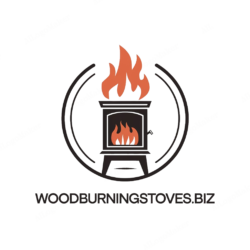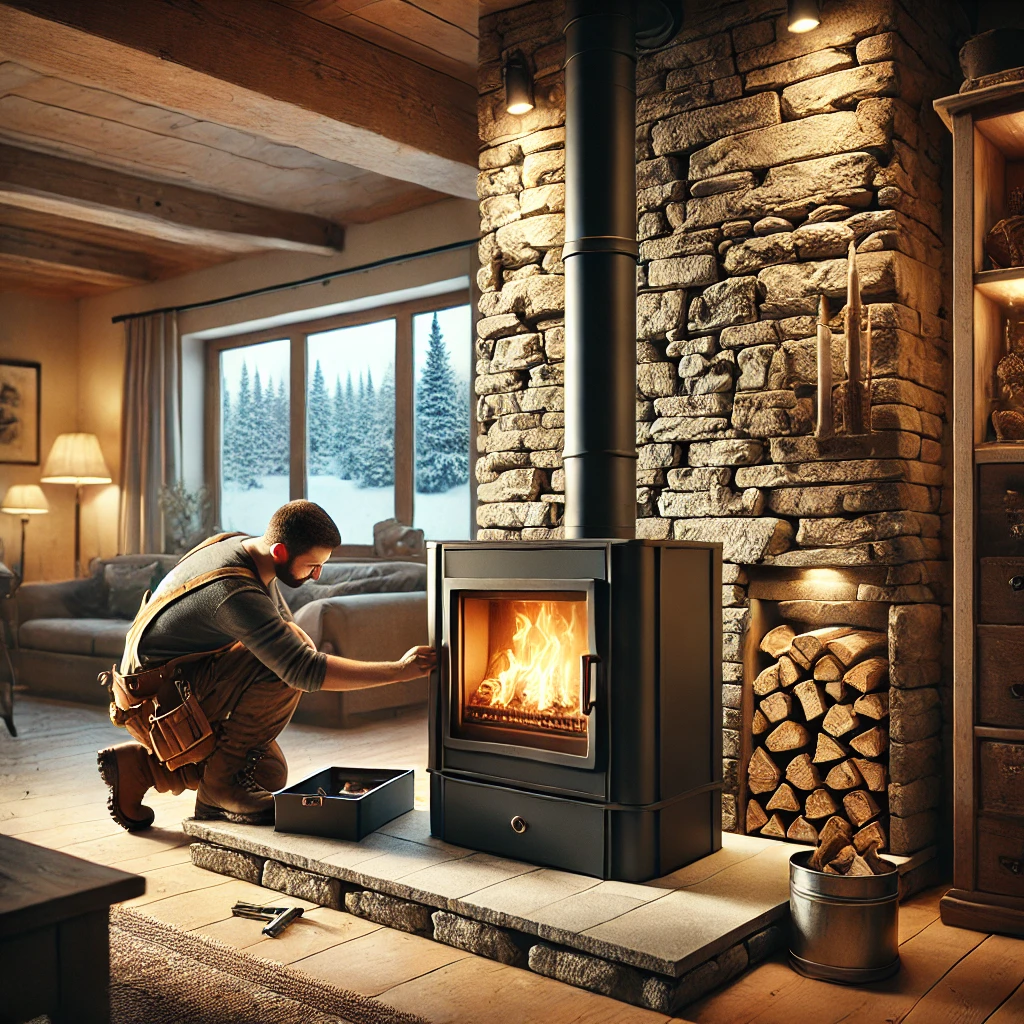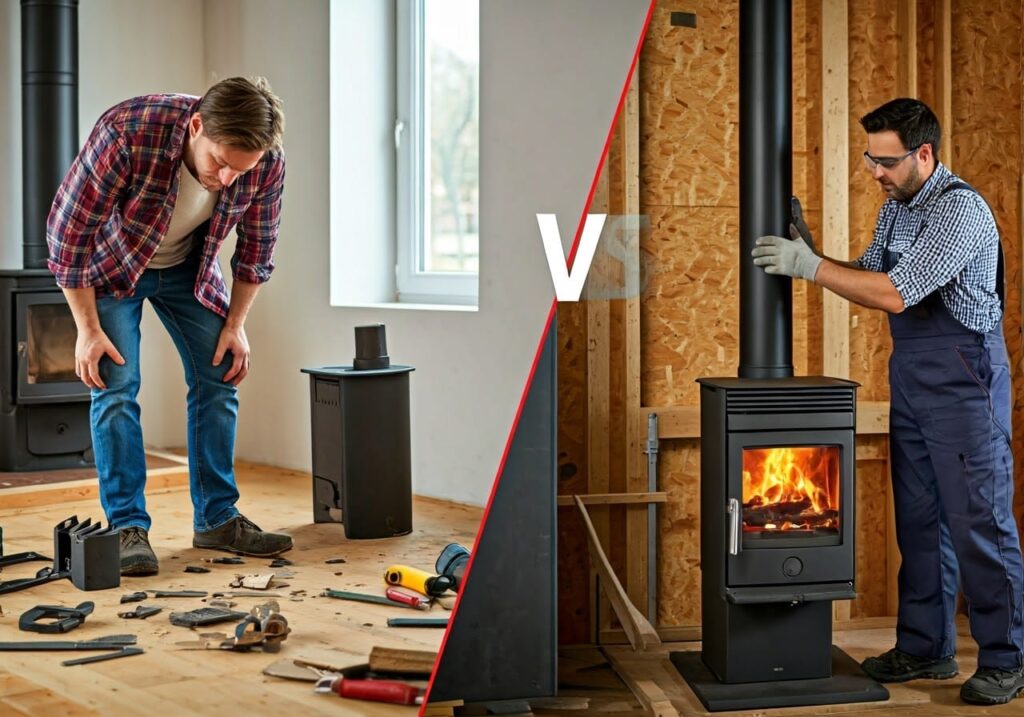Looking to install a chimney for your wood-burning stove? You’re in the right place. Let’s cut through the noise and get straight to what matters.
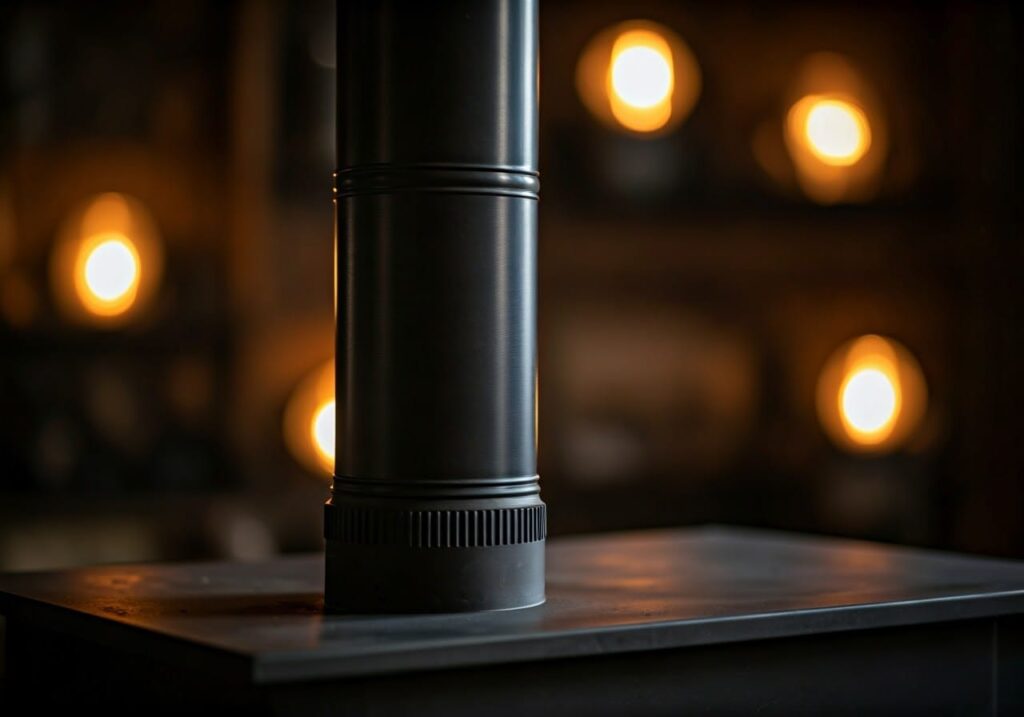
“Every wood stove needs a proper chimney – it’s like giving your fire a safe path home,”
Quick Reference: Chimney Types
| Type | Best For | Cost Range |
|---|---|---|
| Masonry | Traditional homes | £2,000-£5,000 |
| Prefabricated | Modern installations | £1,000-£3,000 |
| Insulated Steel | Quick setup | £800-£2,500 |
| Direct Vent | Airtight homes | £1,500-£3,500 |
Getting Started: What You Need
Before grabbing your tools, let’s nail down the basics:
Must-Have Tools:
- Measuring tape
- Spirit level
- Power drill
- Safety gear (goggles, gloves, dust mask)
- Flashing materials
- Support brackets
Pro tip: Borrow expensive tools you’ll only use once. Save that cash for quality chimney parts instead.
Safety First (No Shortcuts Here)
Your chimney needs to be:
- At least 3 feet above your roof
- 2 feet higher than anything within 10 feet
- Away from trees and power lines
Warning: Skip the safety steps, and you might as well hand-deliver an invitation to a house fire.
Step-by-Step Installation Guide
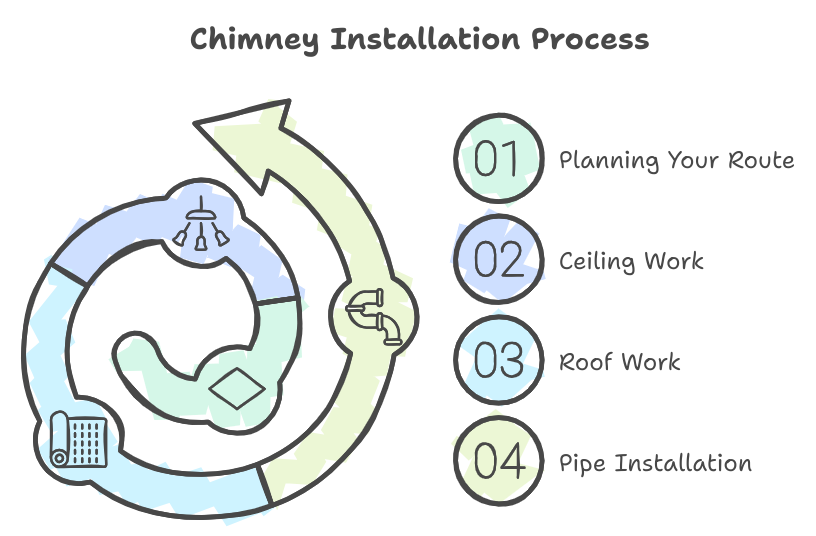
1. Planning Your Route
Pick your spot wisely. Think:
- Straight up is best
- Fewer bends = better draw
- Keep clear of wooden beams
2. Ceiling Work
- Mark your spot (use a plumb bob)
- Cut carefully (measure twice)
- Install fire stops
3. Roof Work
- Cut your hole (match the pipe size)
- Flash it right (water is sneaky)
- Seal everything twice
4. Pipe Installation
Work from bottom to top:
- Connect to stove
- Add sections
- Secure each joint
- Top with rain cap
Common Problems and Quick Fixes
Smoke backing up?
- Clean your chimney
- Check for blockages
- Make sure it’s tall enough
Getting water inside?
- Check your flashing
- Look at the rain cap
- Test all seals
Top FAQs
Q: Can I install a chimney myself?
A: While possible, it’s risky. Most local rules say you need a pro.
Q: How often should I clean my chimney?
A: Every year or after burning 2-3 cords of wood.
Q: What’s the best chimney type?
A: Insulated stainless steel wins for most homes – it’s safe, lasts long, and works great.
Q: How much clearance do I need?
A: Keep 18 inches from walls and 2 inches from anything that can burn.
Q: Do I need permits?
A: Yes – always check local building rules first.
Pro Tips for Success
Materials Matter:
- Buy the best pipe you can afford
- Don’t mix brands
- Keep spare seals handy
Installation Tricks:
- Label your pipe sections
- Take photos as you go
- Test fit everything first
Maintenance Schedule
Every Month:
- Check your rain cap
- Look for rust
- Listen for weird sounds
Every Year:
- Get it cleaned
- Check all seals
- Test smoke detectors
When to Call a Pro
Red flags that say “get help now”:
- Creosote buildup
- Cracked masonry
- Loose connections
- Rust spots
Local Rules You Can’t Skip
Always:
- Get building permits
- Follow fire codes
- Have inspections done
- Keep installation papers
Smart Shopping Tips
Before buying:
- Compare at least 3 quotes
- Read real reviews
- Check warranties
- Ask about installation
Chimney installation for wood-burning stoves might seem tricky, but with the right prep and knowledge, you’ll get it done right. Remember: a proper chimney install means a safer, warmer home.
Need more help? Check these resources:
- Local building department
- Chimney Safety Institute
- Fire safety guidelines
Note: This guide gives you the basics of chimney installation for wood-burning stoves. Always follow local rules and get help when needed.
